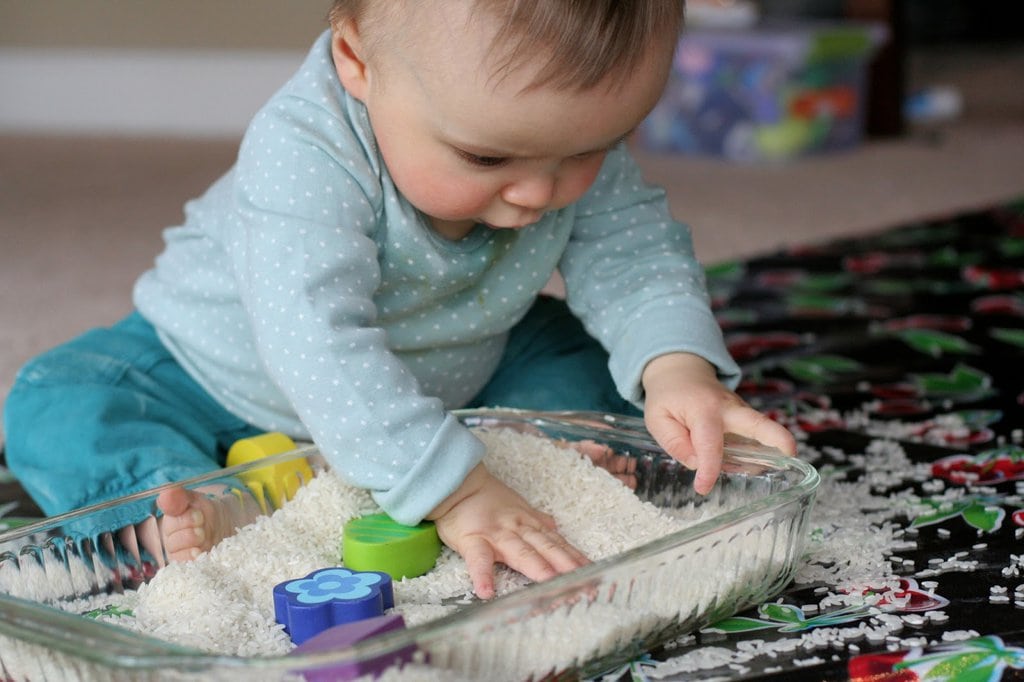Playtime for kids is not just fun but is also an essential part of their development. They begin to explore the world around them and learn new skills through play. Whether problem-solving, collaboration, creativity, or executive functioning, sensory play can positively impact children. Discover what it is and what types there are.

What Is Sensory Play?
Sensory play encompasses activities that stimulate your child’s sight, touch, smell, taste, and sound. It also develops their sense of balance and body awareness. Suzanne Davis, LPC, RPT-S™, owner and outpatient counselor of Davis Counseling & Play Therapy Center, PLLC., explains that play enables the child to communicate and process their thoughts and emotions.
Types of Sensory Play
There are a few types of sensory play categories:
Visual – Improves children’s sense of vision and visual processing. You can incorporate games like hide-and-seek, shadow puppets, and color-mixing activities. Auditory – Helps children process different sounds and develops their hearing skills. Activities to include are listening to or playing music, reading books, and playing clapping games. Tactile – Develops children’s sense of touch. This can include any activity that explores objects using their hands. Some of these are playing with sand, play dough, or slime. Taste and Smell – Stimulates a child’s sense of taste and smell. The activities involved are smelling flowers and tasting different foods. Vestibular – It helps kids interpret movements, such as moving or standing still and going fast or slow. You can include rolling, swinging, running, and jumping. Proprioceptive – Improves the ability to perceive the body position in space and perform simultaneous actions without thinking. This is seen in activities like pushing, pulling, and crawling.

The Benefits of Sensory Play
Encourages Critical Thinking Children develop sensory memories when they use their senses to explore objects and their surroundings. They gain understanding and information from these memories, which they can apply to new situations and experiences.
Helps Emotion Regulation Playing with their senses has a calming effect that aids in children’s emotional regulation and self-soothing. It teaches kids how to defuse tension and gives them a sense of stability as they navigate the difficulties of life.
Develops Fine Motor Skills Building fine motor skills requires sensory play, whether your child is sorting blocks, squishing modeling clay, or finger painting. It takes a lot of practice for babies and young kids to develop these skills, and incorporating sensory play is a great way to do it.
Improves Social Skills Peer play generally enables interaction and communication between children, which encourages problem-solving, compromise, cooperation, teamwork, and taking turns. According to research, kids who play with their peers develop more sophisticated language skills.

Sensory Play Activity Ideas
Ideas for Babies (0-12 Months)
- Have your baby hold and shake a rattle
- Gently touch and tickle your baby
- Play music or sing songs
- Play with a baby-safe mirror
- Play with stacking rings
- Allow your baby to touch different fabrics and textures, such as cotton, wool, velvet, etc.
Ideas for Toddlers (1-3 Years Old)
- Building and sculpting with play dough or kinetic sand
- Finger-painting
- Playing with a bowl of cooked and cooled spaghetti
- Filling a water bottle part of the way with water and adding glitter or food coloring (be sure to duct tape it closed)
- Play in a ball pit (inflatable or plastic)
- Create your own sand table. Fill a container or baking dish with sand and have your child explore the texture, bury toys, and draw shapes with their fingers.
Sensory Play for Older Children (3 Years and Up)
- Playing with their food
- “Cooking” with nature to make pretend food using mud, sticks, grass, etc.
- Jumping with jump ropes or on a trampoline
- Letting your child help bake bread or cookies, especially pouring and mixing the ingredients
- Playing with water beads (safest for older toddlers and children)
- Sorting toys or blocks of different sizes from big to small